Exploring Identity and Memory Through AI Art: A Journey with 'False Memory' and 'Echoes of Identity and Memory Through AI Art: A Journey with 'False Memory' and 'Echoes of Identity'
Exploring Identity and Memory Through AI Art: A Journey with 'False Memory' and 'Echoes of Identity'
Art's inherently disquieting and makes you question your very being. It pokes at you, makes you squirm, and blurs the boundaries between what you know and what you think you know. My collections, False Memory and Echoes of Identity, https://saatchiart.com/davidmillerai. do precisely that, standing at the intersection where technology’s dispassionate calculus collides with the messy, unreliable depths of human memory and self-perception. The works oscillate between a fragile, elusive beauty and a sense of profoundly unsettling familiarity—just out of reach, slipping through the fingers of your conscious mind.
The Role of Memory: False Narratives and Fragmented Recollections
Memory is fickle, treacherous even. It is, perhaps, the most vital pillar of who we think we are, yet it is also easily twisted, susceptible to bias, reshaped by emotion, and often deviously unreliable. The collection False Memory takes a scalpel to the idea that what we remember is what happened. How many of our childhood memories are fabrications, narratives sewn together from fragments, with dark spots and misleading echoes lurking just below the surface?
These works bring a sense of nostalgia with a sting. Images that appear innocent—a child playing in a sunlit garden, a house by the sea—on closer examination, reveal themselves to be riddled with discrepancies. A face in a window that shouldn’t be there, shadows that bend at angles that make no sense, objects that refuse to stay in proportion. These subtle fractures in the scenes have the power to unnerve, like a word on the tip of your tongue that you can’t quite recall or a face that seems familiar but is wrong somehow. The AI’s contribution here is critical. It possesses no memory, no past, no trauma. It simply takes inputs and warps them, bringing out what feels familiar yet untrustworthy—making it the perfect collaborator for a project that aims to confuse, confound, and ultimately force a reevaluation of what we think we know about our pasts.
The works are layered, with images stacked upon image, detail upon detail. These works depict the pliable nature of memory, reshaped through AI’s algorithmic reinterpretations. False Memory confronts us with the disorientation of being unsure of one's own mind—of having the lines between reality and fiction dissolve in real-time.
The Fluid Nature of Identity: Am I What I Think I Am?
If memory is unreliable, then what of identity? This slippery, amorphous construct—forever shifting, adapting, contradicting itself. Echoes of Identity is a collection that confronts us with the question of who we are, or perhaps more accurately, whether we ever truly know ourselves at all. What happens when the reflection staring back is not what you expect, or worse, is not yours at all?
AI art is nothing if not a remixer, a recycler, taking elements of the familiar and presenting them in an alien, unexpected way. In Echoes of Identity, we see this play out in a deconstruction of portraits, where a single figure is rendered multiple times—different expressions, different genders, ages, all smashed together into one composition. It speaks to the diversity of self, that our identity is neither fixed nor singular but shifts from moment to moment, depending on whom we are speaking with, where we are, and what we have experienced.
The AI doesn’t care about our search for meaning or our insistence on cohesion. It takes what it’s given, and in doing so, reveals the terrifying truth—that our sense of self may be just as fragmented, just as constructed as any of these images. There is an uncomfortable truth in the multiplicity—an acknowledgment that we may never fully know ourselves, that the self we present is a patchwork of learned behaviors and masks, performed as needed.
The Mirror and the Mask: Who Do I See?
Mirrors lie. That’s a fact. We look into them, seeking the truth, seeking reassurance, and what they give us is a reflection of our insecurities, a warped reflection of what we want to see. In Echoes of Identity, the mirror becomes both a metaphor for our need for validation and a tool for our deception.
One piece stands out—where a figure gazes into the mirror and is met not with their familiar face but a chaotic collage of others. Here’s the trick: you think you see someone you recognize, maybe even yourself, but look again, and the face has changed. The unsettling realization that the person in the mirror is not necessarily who you think yourself to be is a concept played to haunting effect in these works. The reflection becomes a mask, a mystery, a revelation of the falseness of self-assurance.
The algorithm adds a layer of unpredictability, feeding the concept that identity can shift, mutate, even vanish. The AI is unburdened by the search for consistency, allowing it to present a raw, unfettered vision of identity that’s both mask and window. It is as though the mirror has become a portal, showing us what we were, what we are, and the possibilities of who we could be—all at once.
Blurring the Lines: Personal Truth and Fiction
If one cannot trust one’s memory or sense of self, what, then, is left? In both False Memory and Echoes of Identity, the line between reality and fiction becomes so blurred that it ceases to matter. Our memories are stories, subjective tales we tell ourselves, colored by emotion, time, and interpretation. Identity, likewise, is a story—an evolving one that changes each time we tell it.
The brilliance of AI art lies in its ability to inhabit the space between truth and fiction. In these collections, I’ve used AI to take what feels familiar and twist it just enough to evoke discomfort. A memory turned on its head, a face that doesn’t quite belong—these slight, often barely perceptible shifts capture that strange dissonance we experience when a long-held belief or memory is revealed to be false.
Ultimately, the art asks: What is more important—the accuracy of the memory or the meaning it holds for us? AI doesn’t seek meaning. It just is. In that regard, it is both an ideal partner and an unfeeling adversary in this exploration.
Conclusion: Challenging Perceptions Through AI Art
False Memory and Echoes of Identity explore what it means to be human in a world where technology forces us to confront our very sense of self. AI art serves as a tool not merely for visual creation but for deep introspection. Through these works, we are reminded of the fragile and unreliable nature of our pasts and of the fluid, often elusive nature of our identities.
The art asks us to look beyond the surface, beyond the immediate and the apparent. It compels us to confront the uncomfortable possibility that the truths we cling to—about ourselves, our pasts, our very essence—may be nothing more than stories we’ve told ourselves so many times that we’ve forgotten where the fiction ends and reality begins.
AI art doesn’t provide answers. It blurs the lines, forces us to look again, and challenges us to see what we’d rather not. In the end, it is not just about creating beautiful images, but about holding up a mirror—a cracked, distorted mirror—and asking us whether we dare to look closer, to see what lies beneath, or whether we choose to look away and continue the comforting illusion.
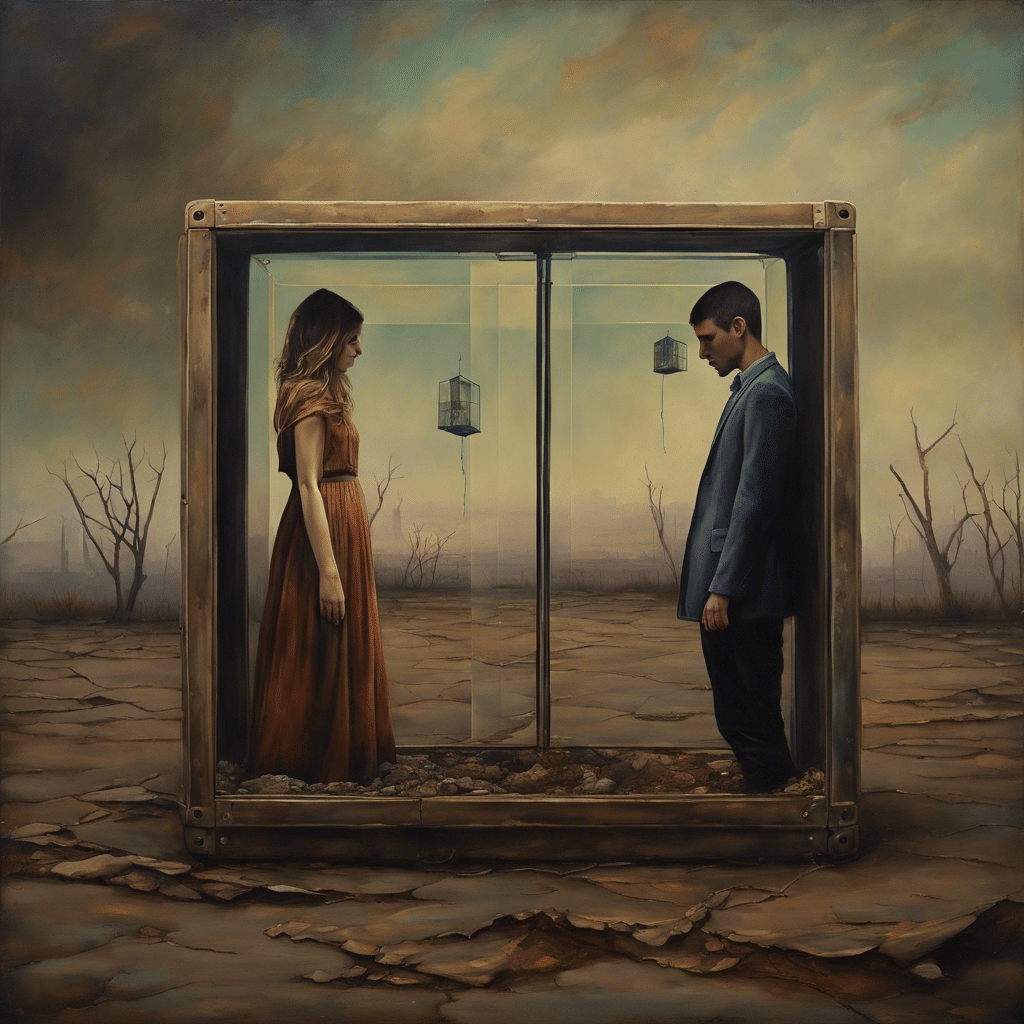
Confronting identity in a relationship

Was my childhood really that peaceful??
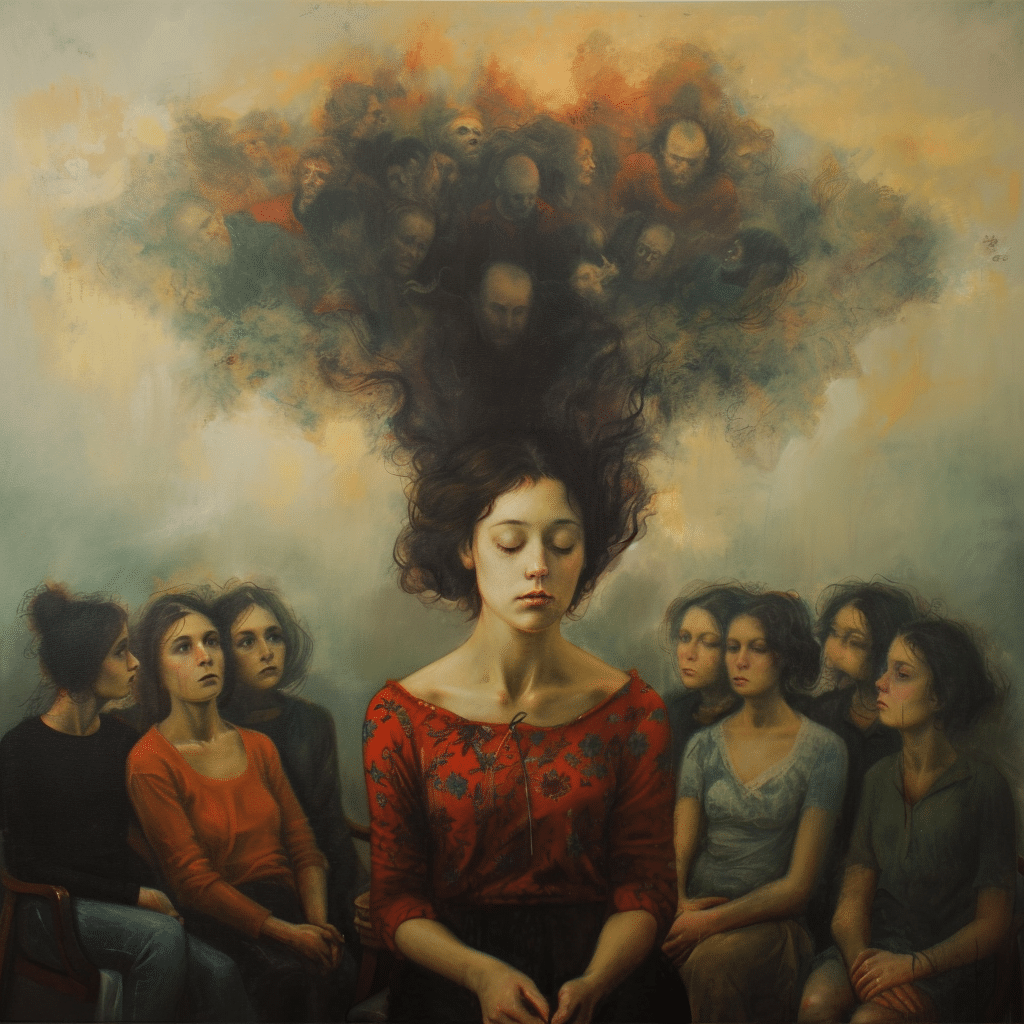
Group therapy session dealing with memory.

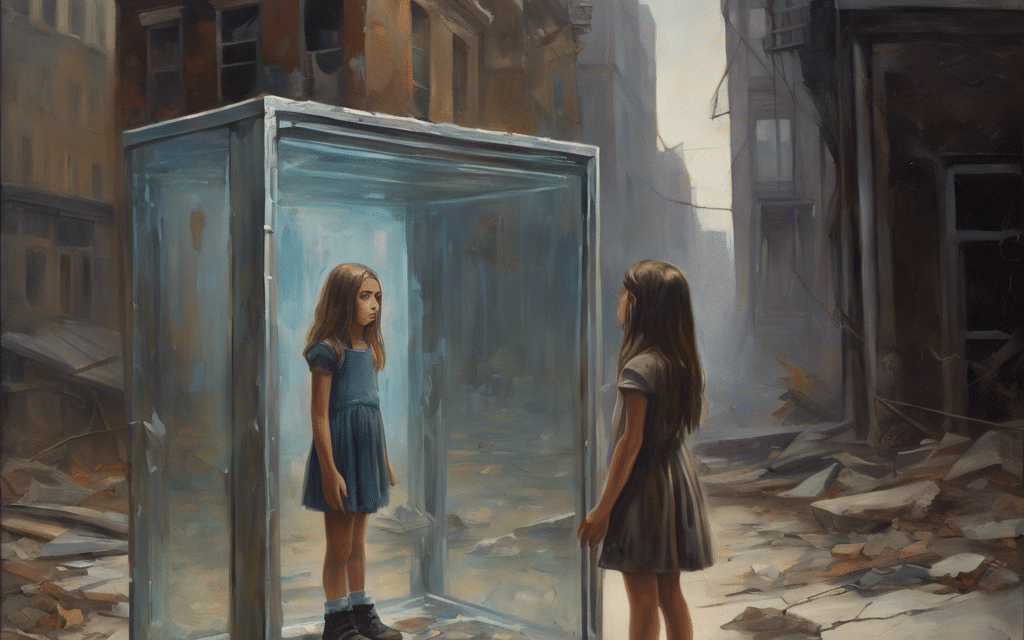






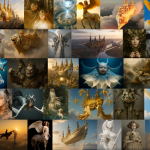
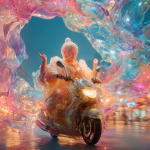







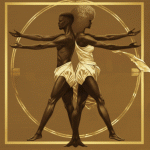












Comments